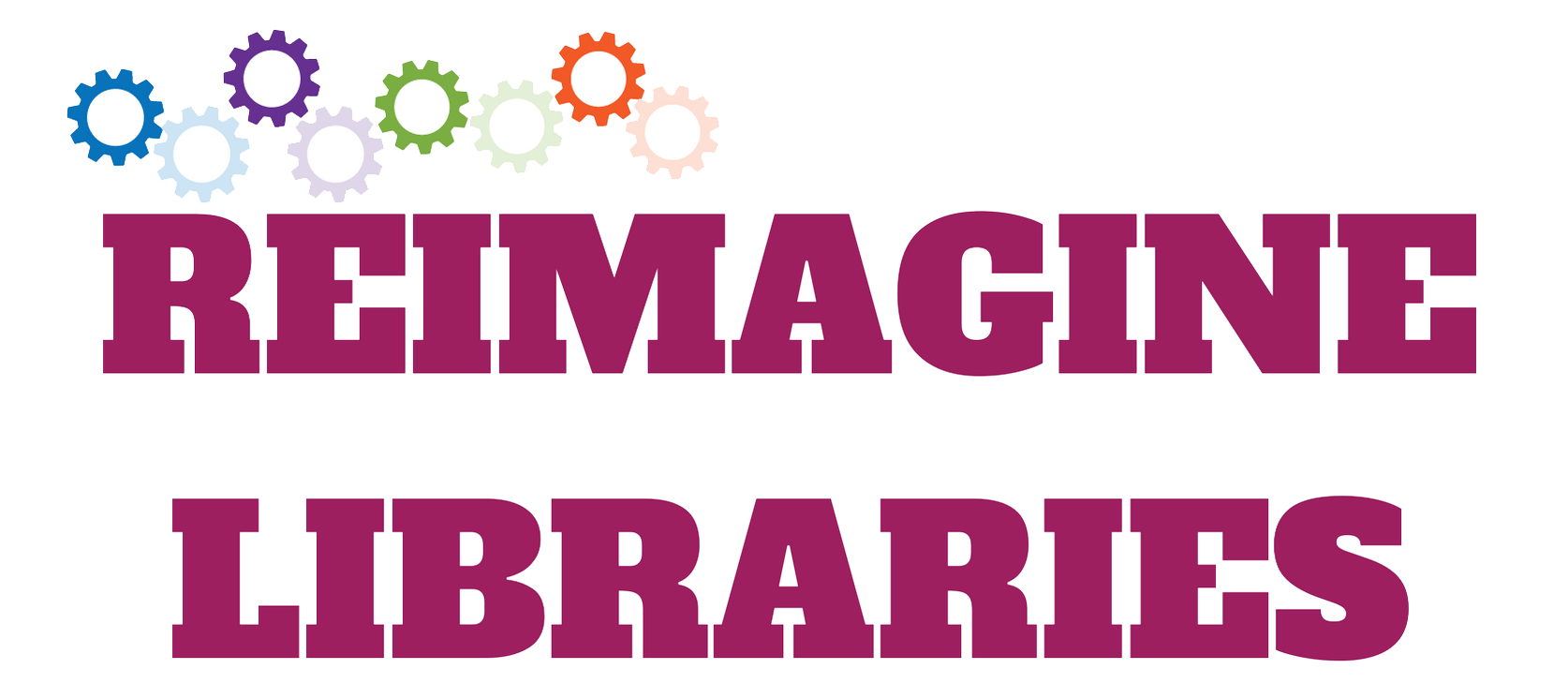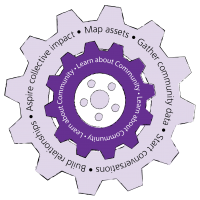Learn About Community
Overview
During a crisis, no single organization can tackle challenges faced by a community. When libraries work in isolation, staff rely only on the resources and assets that they have access to or have prior knowledge of. However, if you commit to working collectively with individuals and organizations in your community, it is possible to access a collection of assets that can be leveraged for services that meet the critical needs of non-dominant youth and families. This is where collective impact comes in. As a public servant working within a collective impact framework, it is essential to learn about your community by building relationships and gathering data about community assets and needs.Staff can gather data through community mapping; census information; and local health, nutrition, education, income, and crisis-related indicators (i.e., COVID-19 dashboard) available for your specific location. Library staff must review and analyze this data regularly and create fact sheets to highlight essential information uncovered. Additionally, map the organizations, businesses, individuals, spaces, education and entertainment venues, and so on that are a part of your area in an asset map. (See the tools section for more on asset mapping.) By doing this, staff will be able to see where there is a surfeit of opportunity and where there might be gaps that they can help to fill. With the community data and asset map in hand, it’s possible to identify who in the community can provide insight into how the library, as a part of a greater community, can support youth and families during times of crisis.
It is essential to continue building or establishing new relationships with the people and organizations identified in the data gathering and asset mapping. These relationships must focus on what each institution and/or person brings to the community and how everyone can collaborate to build necessary services. Begin with initial conversations to learn about each other and ask questions about the person or organization. These relationships and connections take time to build so whenever possible start this work before there is a crisis. When a crisis arises, you will be able to work between and among different types of assets. Library staff do not have to take the lead, instead work together to determine strengths among all involved and leverage those strengths in order to build what’s needed. Remember that you can start by talking with just a few individuals that you have identified in your relationship-building efforts and let your connections grow over time. You do not have to talk with every single asset in your asset map before working on next steps. As you build relationships and learn about the community, a logic model can help determine what you want to achieve and how you will get there. Logic models serve as a guide for moving forward with essential tasks during a crisis, and should be tweaked as you continue to learn about community needs and assets. To truly reach collective impact, go beyond simply collaborating. Share the logic model with individuals and organizations identified as assets in the community and obtain their feedback (Kania & Kramer, 2011).
Tools
There are multiple formats for asset mapping. Use a format that best serves your needs. You can even mix formats together. Here are a few templates and examples that you can use:
- See page 38 of The Engaged Library: Chicago Stories of Community Building (Urban Libraries Council, 2006).
- See the step-by-step guide adapted from Public Allies Leadership Practice Packet: Activating Asset Mapping.
Once you have identified assets, contact those you would like to build relationships with.
If you don’t have a direct connection, consider who you already know in the community that could make an introduction for you. In your initial contact let the person/organization know that you want to learn more about their work and are not asking them for anything.
When you meet, use these conversation starters as a jumping-off point for the discussion.
There are multiple tools that are available to gather data about your community. Excellent tools to get started include: Census Reporter, ESRI Tapestry, KidsCount Data Center, and National Center for Education Statistics. You can read a brief description of each of these tools.
Logic models help you to articulate and map:
- Desired goals and outcomes based on the crisis needs (what will your community gain?)
- Intended outputs (what programs and services need to be developed and produced?)
- Needed inputs (what resources are needed to achieve these goals and outcomes?)
- Planned activities (what resources does the library bring to this work?).
Use the template to create a logic model that connects to what you learned about and with the community. A short video on how to create a logic model and a completed logic model is available.
Essential Task in Practice
- The Providence Public Library (PPL) in Rhode Island, as a part of their Teen Squad project, worked for several years (through an Institute of Museums and Libraries funded project) to build relationships with a variety of people and organizations. Teen Squad is a project that focuses on workforce development and engaging with teens to help them gain skills needed to be successful in employment. This project is built off of teen interests. Through activities in which teens are paid as they gain a variety of job skills, they perform authentic work in areas such as data visualization, culinary arts, web development, and fashion. During the crises of 2020, as staff continued their workforce development services for teens, library staff kept several data points in mind:
- Many youth participating in this program did not have access to the technology tools necessary to take part in the library’s activities.
- The services and capacity of each community partner involved in Teen Squad changed as a result of the pandemic.
- The knowledge and skills mentors and coaches needed in order to successfully work with youth in a virtual environment.
- PPL’s existing relationship building and growing knowledge of community (see sample community data set), even prior to the 2020 crisis, led to a strong set of partnerships that support non-dominant youth and their family’s learning.
A look at an asset map for the Providence community provides a glimpse of all of the opportunities the library can leverage, and which they did leverage during the crises of 2020. As a result of their own asset mapping, library staff recognized assets within the city and included those that specifically connect to their workforce development focus.

An example of the ongoing relationship building with a community asset is PPL’s work with the Providence Afterschool Alliance (PASA). PASA serves as a backbone for many out-of-school time collective impact projects in the city, and as a result is a valuable community connector for all those working with youth and families. As the library’s workforce development focus came to the fore, library staff recognized that a deep relationship with PASA had not yet been established. Library staff, therefore, took the initiative to better learn about PASA, understand the mission and vision of PASA, gain insights into the needs of youth and families in the city, and eventually become a thought partner for and with each other. As PPL better understood what outcomes and impacts were important, a logic model took shape. With the crises of 2020, the PPL logic model can was revised to embed activities necessary to reach emergency-related outcomes.
Do It With Others [DIWO]*
To get started doing this on your own (keep in mind that each of the items listed may need to be re-visited as learning and understanding of community develops):
- Use asset mapping and gather data about the community.
- Begin developing relationships with people and organizations identified on the asset map
- Continue relationship building by following up on learnings from initial conversations
- Design and iterate a logic model based on learning from and with community partners, members, etc.
- Work towards collective impact by gathering feedback on the logic model from community partners and work together to design activities focused on reaching the intended outcomes and impact.
*We use the phrase Do It With Others (DIWO) instead of Do it Yourself (DIY) which we derived from the maker movement vernacular (see Maravilhas & Martin, 2017) to reflect the nature of these steps that emphasize the focus on community and collectivism, further calling library staff to embrace the public servant mindset.
References
Kania, J., Kramer, M. (2011, Winter). Collective Impact. Stanford Social Innovation Review, Winter 2011. Available at: https://ssir.org/articles/entry/collective_impact#
Maravilhas, S., Martins., J. (2017). Tacit Knowledge in maker Spaces and FAB LABs: From DO IT YOURSELF (DIY) to DO IT WITH OTHERS (DIWO). Handbook of Research on Tacit Knowledge Management for Organizational Success. Available at: https://www.researchgate.net/publication/316091165_Tacit_Knowledge_in_Maker_Spaces_and_FAB_LABS_From_DO_IT_YOURSELF_DIY_to_DO_IT_With_OTHERS_DIWO

